Affiliate links on Android Authority may earn us a commission. Learn more.
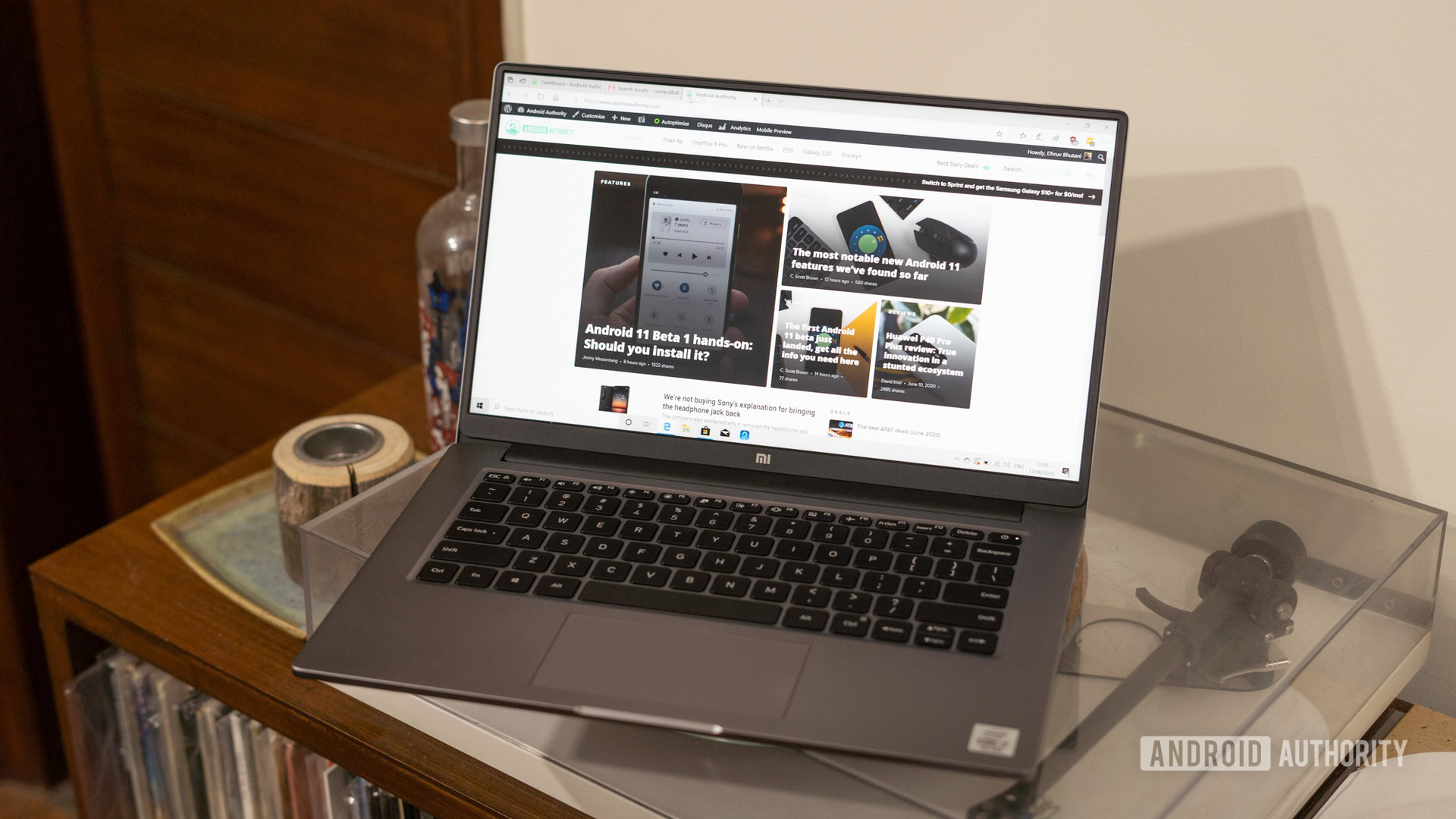
Mi Notebook 14 Horizon Edition review: A design-focused machine with drawbacks
June 16, 2020
Xiaomi Mi Notebook 14 Horizon edition
What we like
What we don't like
Xiaomi Mi Notebook 14 Horizon edition
After spinning off POCO and Redmi, Xiaomi has been working hard to reinvent itself as a premium ecosystem player. From televisions to robot vacuum cleaners, the next frontier for the brand is laptops.
Xiaomi is going for a clear-cut strategy not far removed from its smartphone range. Taking all the learnings from selling phones, Xiaomi has just five laptop options with the principal difference being the amount of storage and one of two processor options.
The company is betting on a clean, simple design that should make the machines even more appealing to a younger demographic. However, the proof is in the pudding. Here’s the Android Authority Mi Notebook 14 Horizon edition review.
What’s with the Horizon edition?
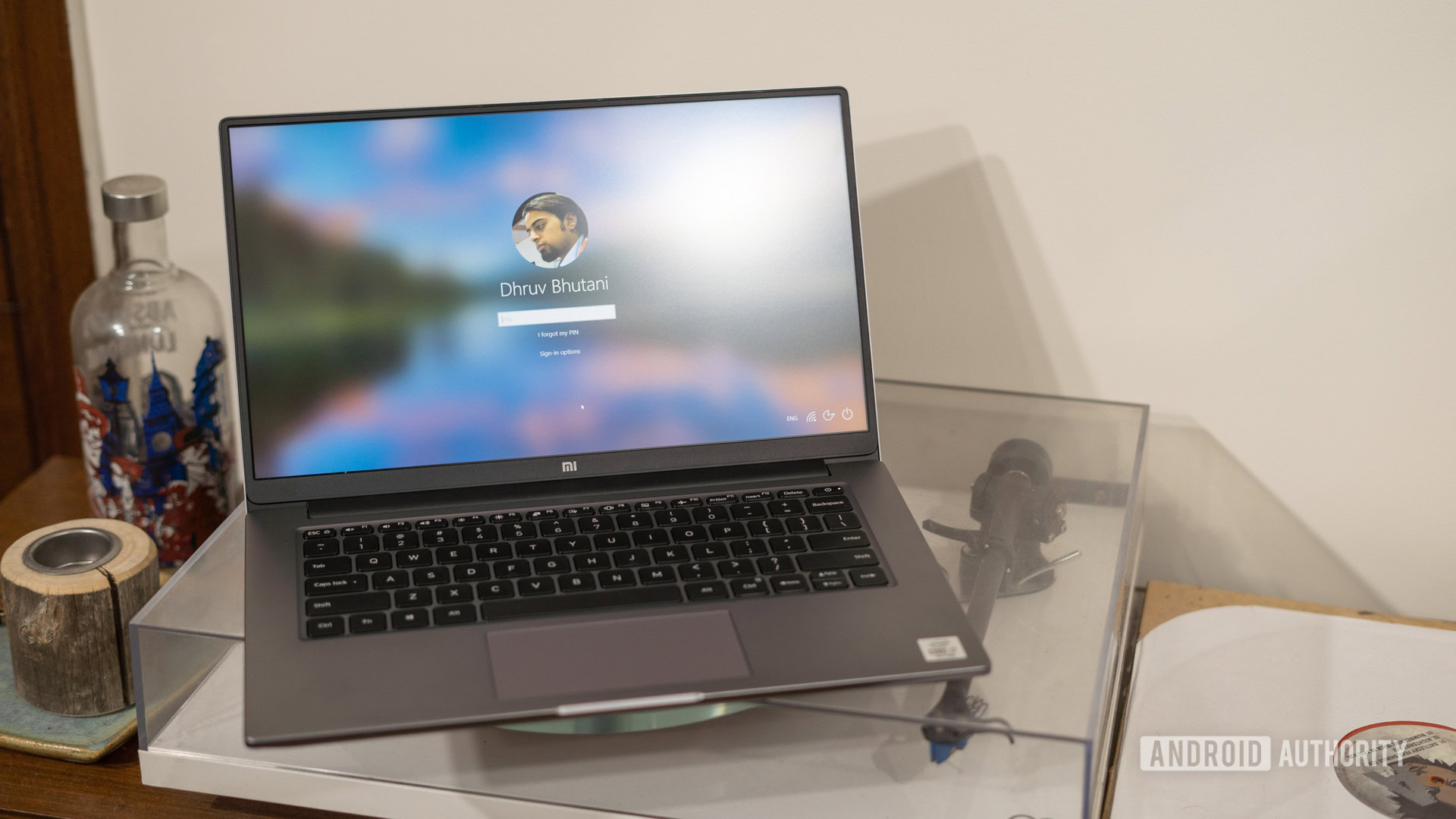
Instead of a diverse portfolio of laptops, Xiaomi is initially focusing on essentially just two customizable SKUs.
The base model is the regular Mi Notebook 14. It ships with a Core i5 processor, 8GB RAM, and 256GB storage. More storage and an NVIDIA MX250 graphics card are available as upgrades.

Next up is the Horizon edition, which is the souped-up version of the Mi Notebook 14. It packs a more powerful Core i7 processor with 8GB of RAM, 256GB of storage, and an MX350 GPU. Users can opt for a 512GB SSD or pay a little more for an equivalent NVMe drive.
The biggest difference between the two, however, is the edge-to-edge display. The regular Mi Notebook 14 has fairly small bezels, but the Horizon edition drops them down to just 3.3mm — a change that really helps the machine stand out.
Design: It’s all about restraint
- Magnesium and aluminum alloy construction
- 1.35kgs, 17.15mm thickness
- 2 x USB 3.0 ports, 1 x USB 2.0, 1 x USB-C port
- HDMI 1.3b output
- Headphone jack
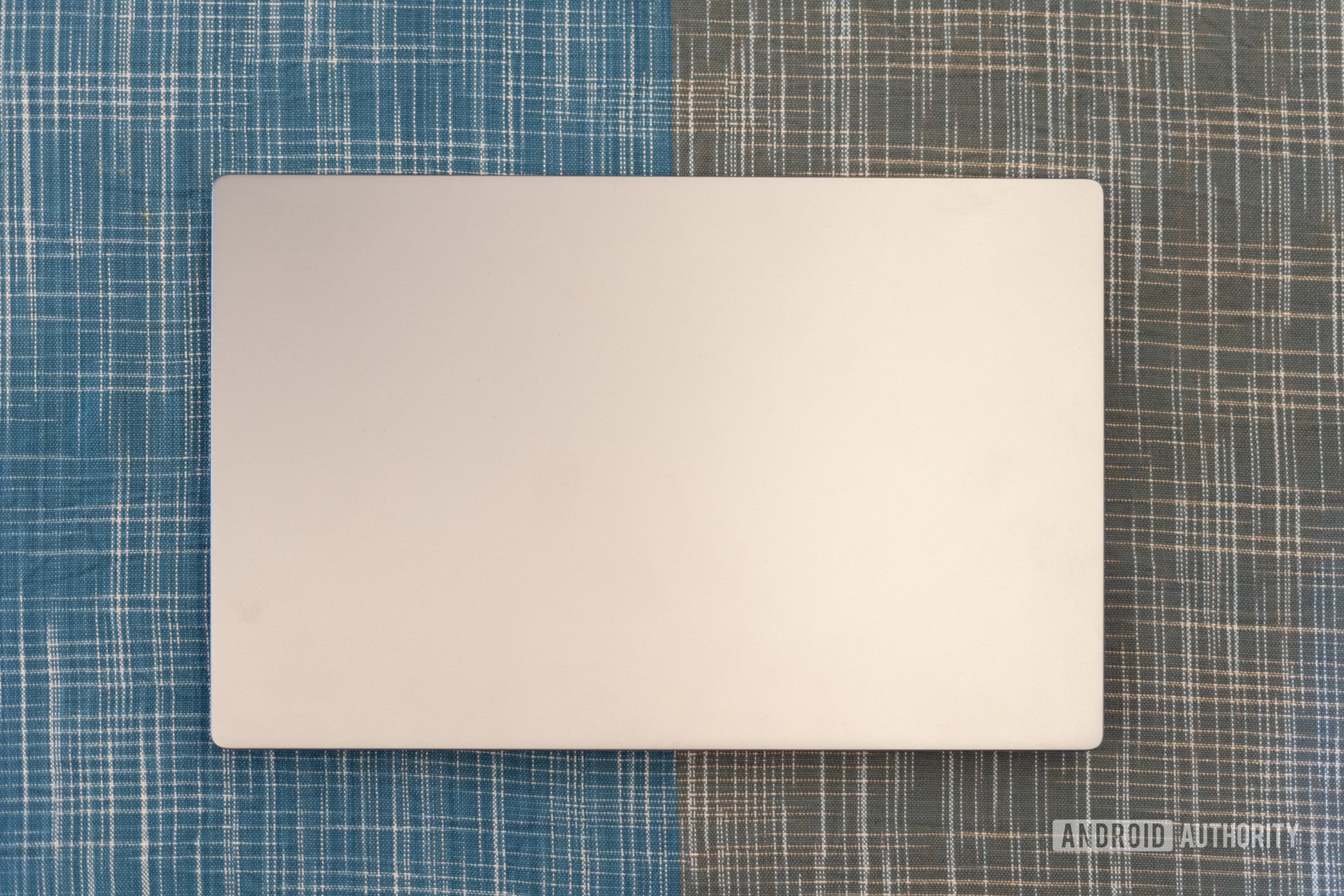
If I had to identify one area where the Mi Notebook 14 manages to distinguish itself from the alternatives, it has to be the design. Prima-facie, it picks up the best bits from the Macbook Air, though calling it a clone would be a disservice.
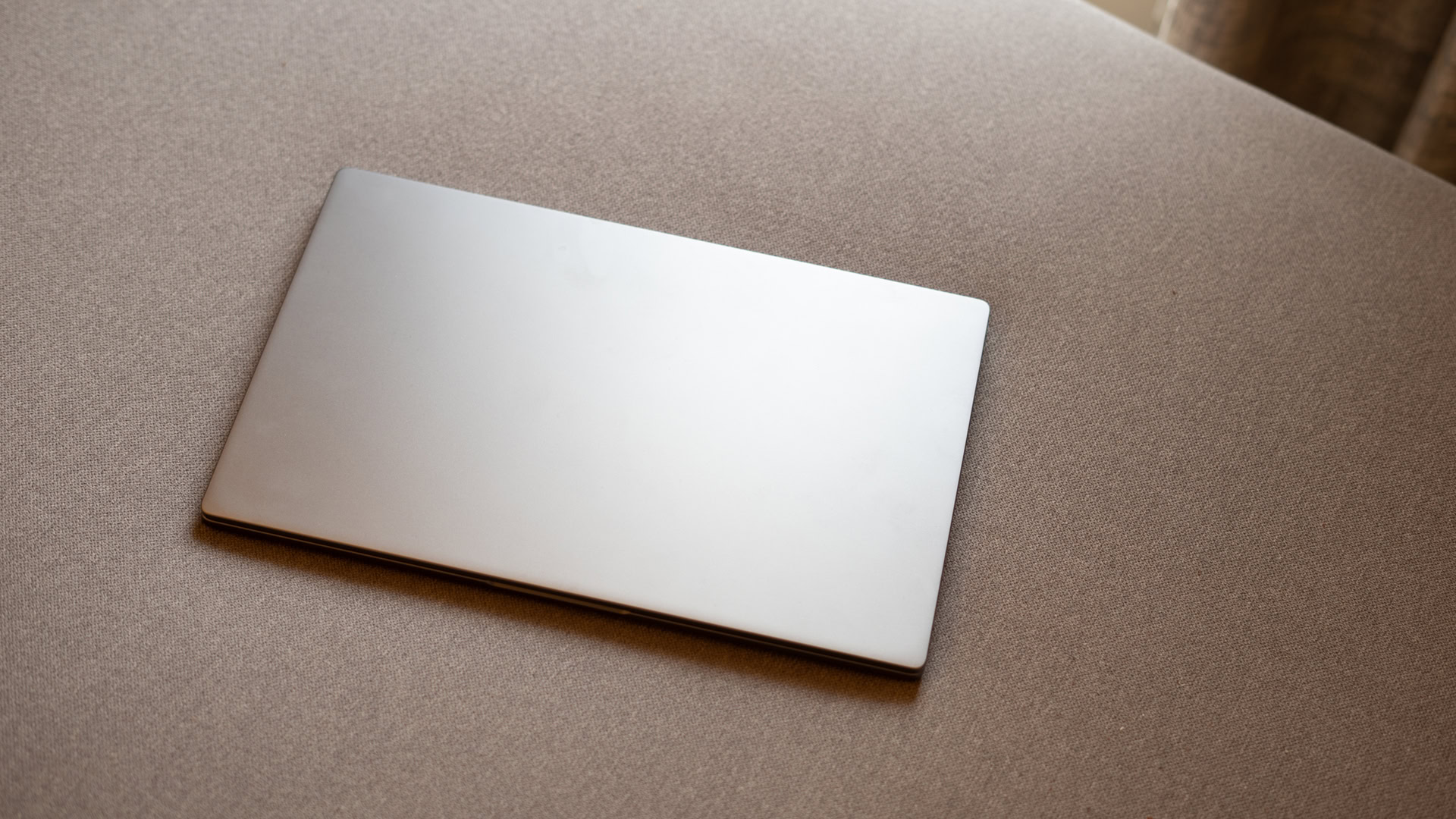
The entire chassis is made of a magnesium-aluminum alloy that goes a long way in setting the laptop apart from the plastics common in this category. Xiaomi is truly driving home the point of this being a thin and light laptop: It measures 17.15mm thick and weighs a mere 1.35kgs.
The Mi NoteBook 14 lacks visual flair; the clean aesthetic comes across as a bit generic.
I wouldn’t quite call the build top-notch. You will notice a bit of flex when you pick it up, and I’ve already spotted a few scuffs and scratches on the bottom of the machine despite treating it with kid gloves. Meanwhile, the top-lid is completely bereft of branding. While I can certainly appreciate the lack of overzealous design, it makes the machine look a bit generic.
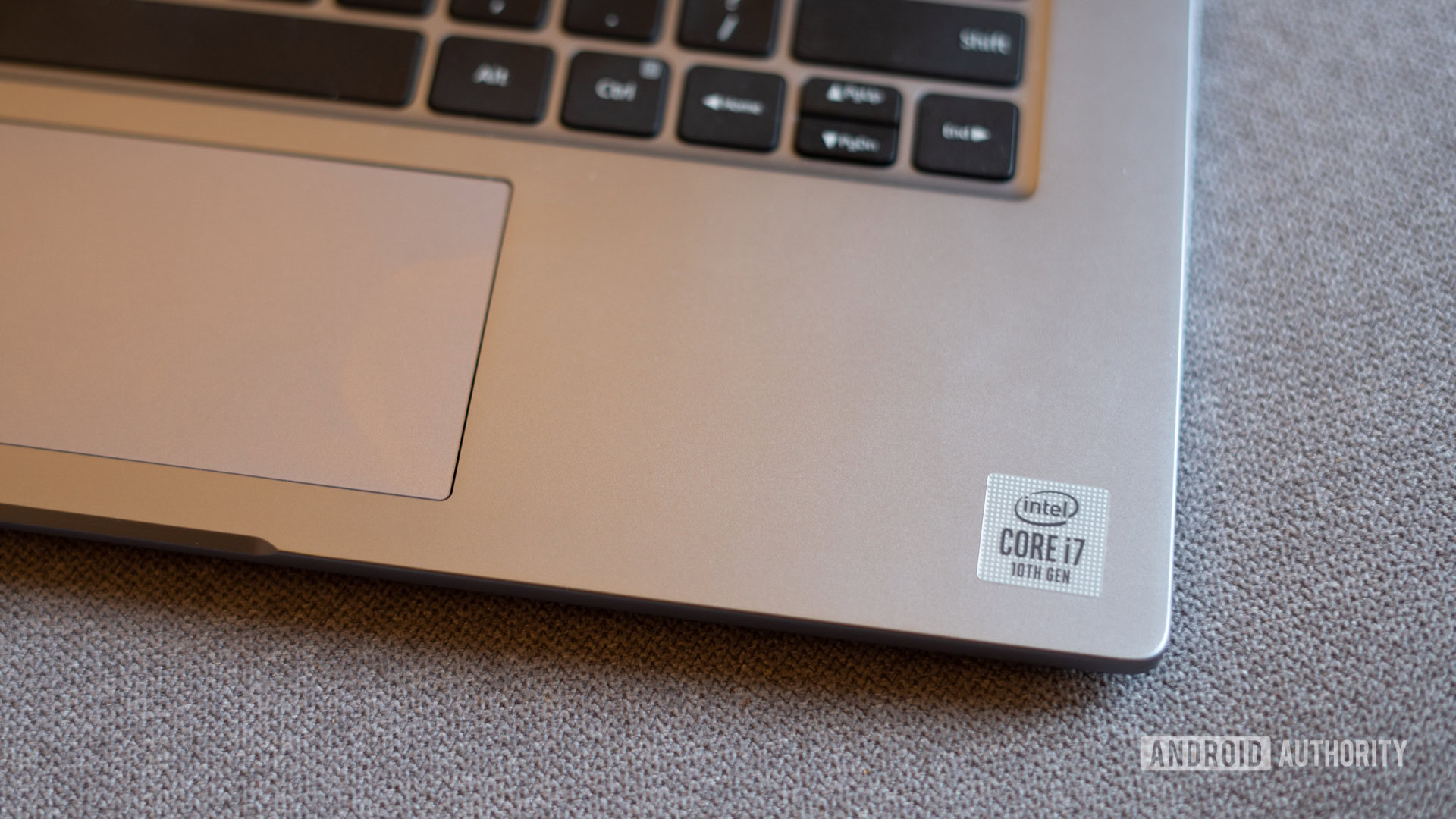
The Mi Notebook 14 has a fairly reasonable port selection, though some omissions might be irksome. On the right side of the chassis users get two full-size USB 3.1 ports, a USB 3.1 capable Type-C port, as well as an HDMI 1.3b port. I like the fact that there’s enough gap between the ports to allow you to plug connectors in with ease. Additionally, the barrel connector for the charging port is also found here. I’d have liked it on the back of the machine for a cleaner set-up, but that’s just nitpicking.
On the left side of the chassis is a single full-size USB 2.0 port as well as a headphone jack. Unfortunately, the laptop omits an SD card reader, which is rather unfortunate. It is also worth mentioning that lower-end variants of the machine have to make do with a single USB 3.0 port, which is far from an ideal.
Opening up the lid, there’s a lot to appreciate. The stand-out feature, of course, is the edge-to-edge display afforded by the Horizon edition. There’s a barely-there 3.3mm bezel around the screen that brings the stunning Dell XPS series to mind. The only branding sits along the bottom edge of the screen, where you’ll find a painted-on Mi logo. There’s a cost for those thin bezels: the Mi Notebook 14 has no webcam at all. An old-school USB webcam is, however, included in the box.
Does the Mi Notebook 14 have a good display?
- 14-inch edge-to-edge display
- Matte finish
- 3.3mm bezels
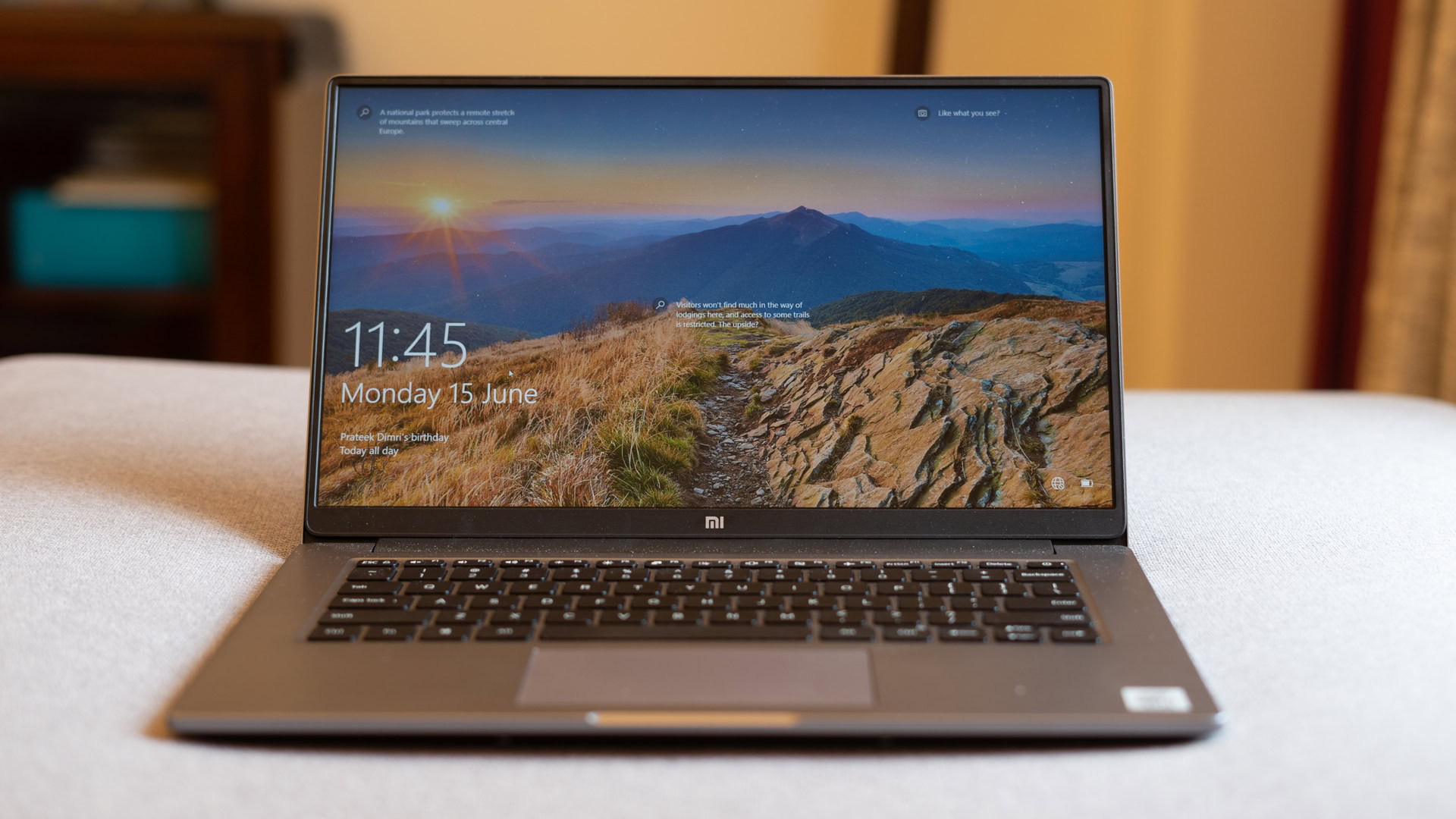
The laptop features an edge-to-edge, 14-inch display that looks impressive. The reduced bezels allowed Xiaomi to cram a 14-inch panel into the same chassis as a laptop with a 13.3-inch display.
The matte finish and high peak brightness make it easy to view the screen when outdoors.
I like that Xiaomi opted for a matte display. It may not look as vibrant as a glossy panel might, but it helps get rid of errant reflections and improves sunlight visibility. The latter is particularly important in bright and sunny India. In fact, the display is surprisingly bright as well.
The Full HD resolution isn’t going to floor you, but it does a serviceable job. Color accuracy isn’t anything special either, and the display won’t delight photographers. Moreover, there is a noticeable color shift once you cross a 45-degree angle.
How’s the keyboard and trackpad?
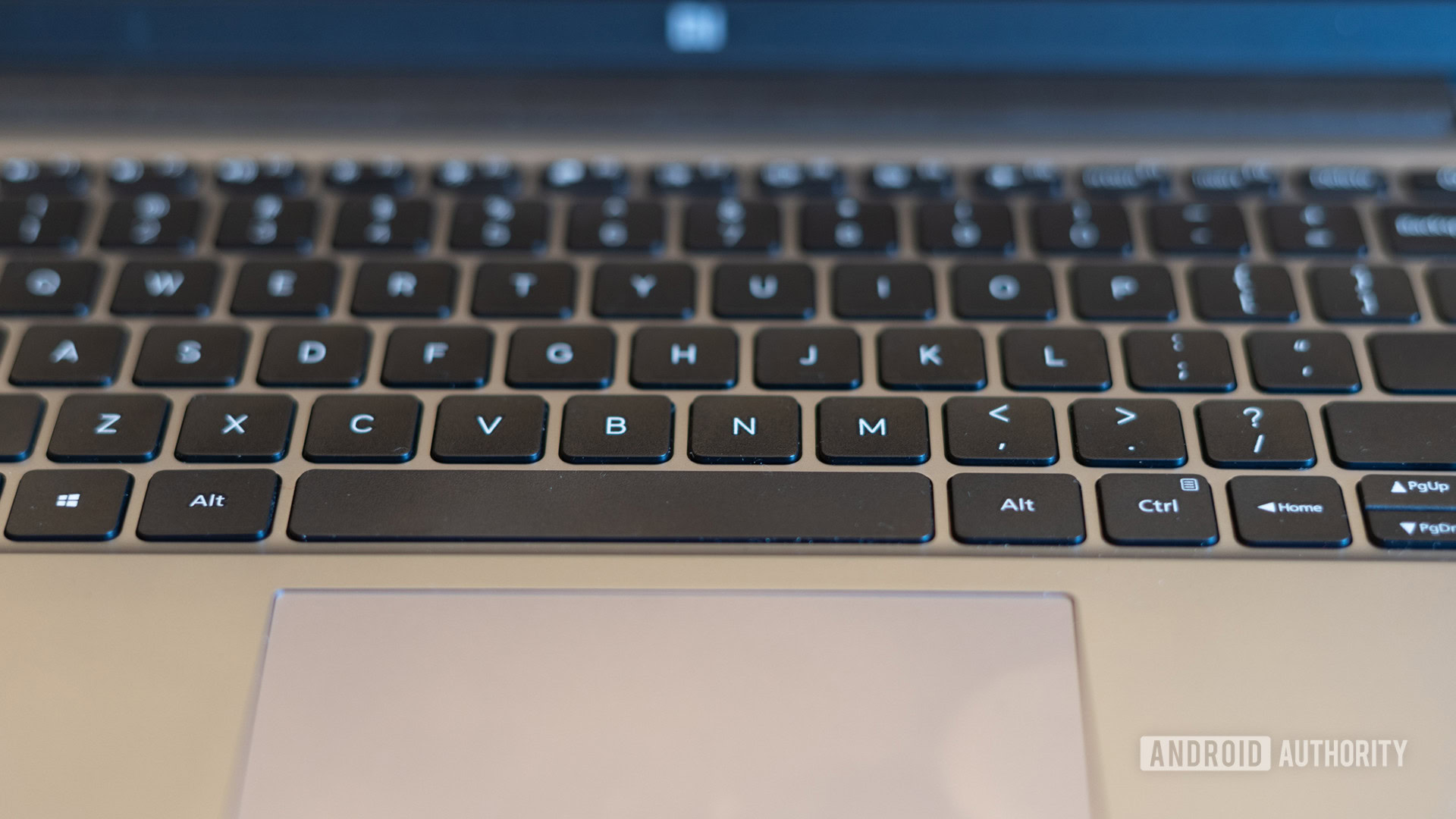
As an editor at Android Authority, my days are spent hunched over a keyboard typing out thousands of words. A quality keyboard is, simply put, extremely important to me.
First, the good. The Mi Notebook 14 sports chiclet keys with a scissor mechanism. I really liked the travel distance and, in fact, grew to appreciate it more than the awful butterfly keys on my Macbook. Some might find the 1.3mm of travel a bit spongy, but I found myself typing at full speed within minutes.
The 1.3mm travel distance and general layout of the keyboard making fast typing a breeze.
Unfortunately, the quality of the keys themselves is rather pedestrian. They feel like they’re made of cheap plastics and the rough feel felt almost abrasive to the touch. Moreover, the lack of backlighting is a serious omission. A backlit keyboard is table stakes in 2020, and Xiaomi definitely dropped the ball here.
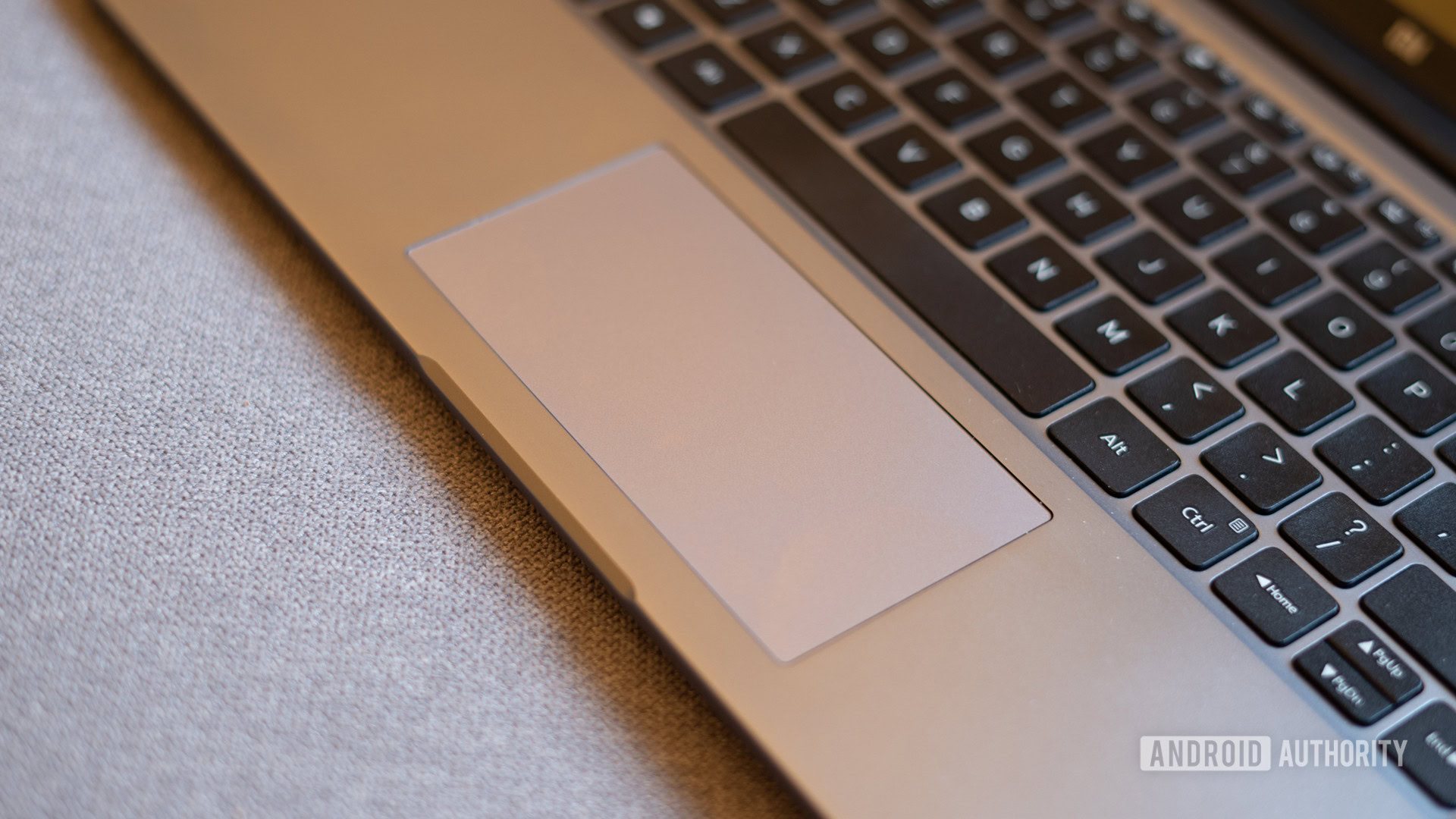
The trackpad, like the keyboard, is a mix of good and bad. Despite lacking Windows Precision drivers, I found the entire experience to be reasonably enjoyable. The trackpad is responsive enough and I never found it lagging behind gestures. I did have an issue with the height of the trackpad — or rather, the lack of it.
I don’t have the biggest hands around, but there’s just not much room between the edge of the laptop and the bottom of the keyboard. Scrolling through large documents quickly cramped my hand. It’s worth noting that the depth for the click action along the bottom of the trackpad is rather deep. I had no issue with it, but some might find it to be less than ideal.
How well does the Mi Notebook 14 perform?
- Core i5 10210U / Core i7 10510U options
- 8GB DDR4 RAM
- 256GB/512GB SATA 3/512GB NVMe SSD
- NVIDIA GeForce MX250/MX350 GPU
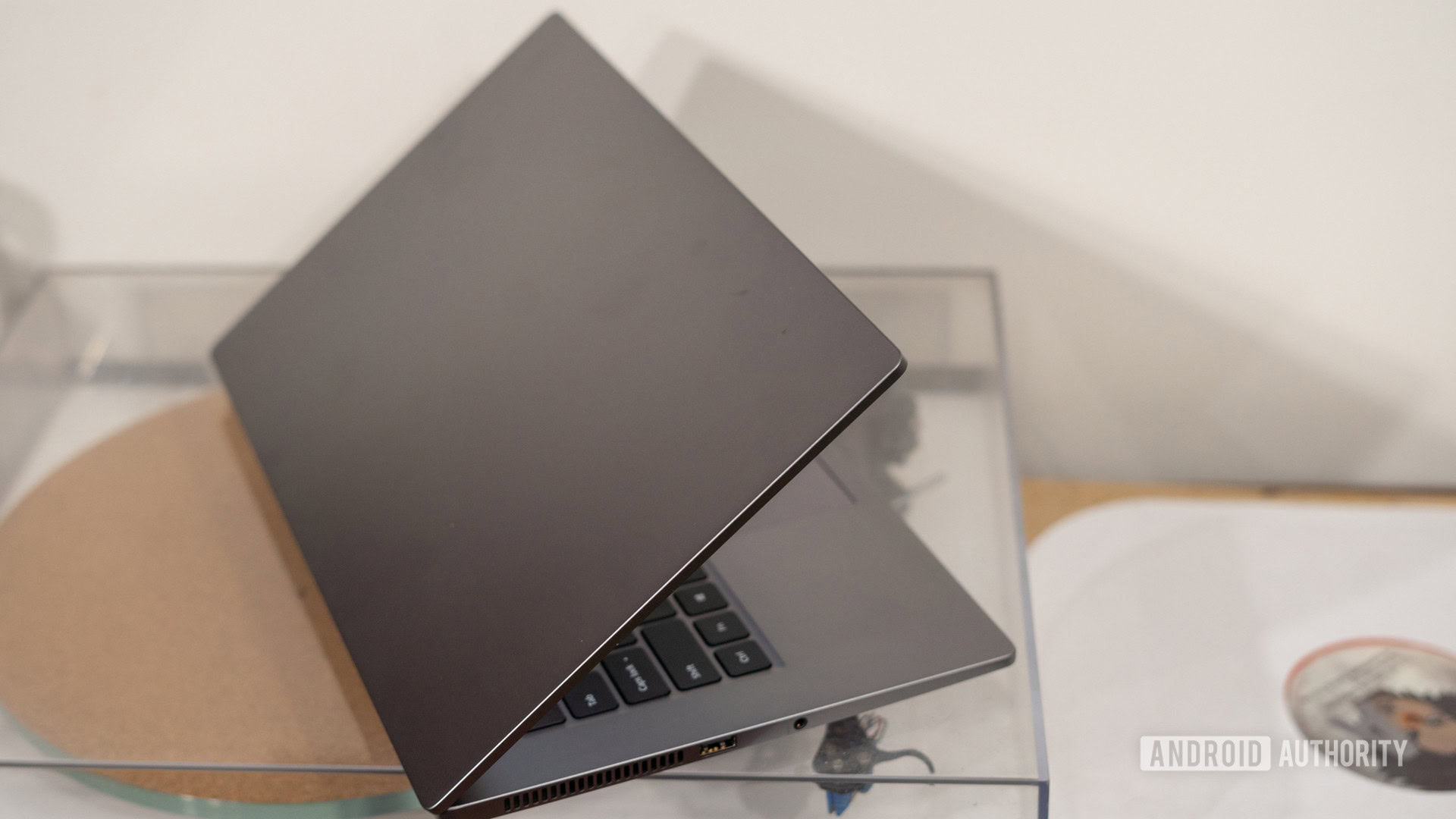
Let’s get something out of the way. The Mi Notebook 14, even in its highest-end configuration is not meant for gaming at all and if that’s what you are looking for, this is definitely not the machine to get.
The laptop, as configured, ships with a 10th generation Core i7-10510U Comet Lake processor that has been designed to work within a 15W thermal footprint. There’s 8GB of soldered-in, non-upgradeable RAM. And finally, the laptop ships with an NVIDIA GeForce MX350 GPU.
On the lower-end Core i5 variants, you can opt for an MX250 GPU. Finally, storage options go all the way from a 256GB SATA SSD to a 512GB NVMe drive. Unlike the RAM, storage can be swapped out whenever you want.
The Core i7 variant that we have on hand packs enough grunt for most day to day tasks and I could comfortably juggle 8-10 tabs with an instance of Spotify in the background with ease. I found myself constrained by RAM. With Chrome being the memory hog that it is, a word processor, music app, and a couple of tabs were enough to saturate the 8GB of RAM. It’s a shame that Xiaomi chose not to offer a 16GB RAM variant, especially on the top-end Horizon edition.
If your day is spent in presentations, social media or a word processor, the Mi Notebook 14 will suffice.
Add Slack and a photo editing suite to the mix and the performance limits of the machine started to become clearer. The fans spun up audibly and I noticed significant spikes in CPU usage.
Due to the choice of form-factor, the laptop lacks an adequate cooling system. The right side of the palm rest gets particularly hot during intensive use and the same can be said for the top-left corner. The ventilation grille on the left blasts out hot air and you definitely won’t miss the low drone of the fan under heavy use. In a particularly intensive session, the bottom of the laptop got hot enough to scorch my leg. Thermal throttling also kicks-in and you start noticing things starting to slow down. The high-temperatures play into the laptop’s inability to achieve peak sustained performance.
Gaming is definitely not the Mi Notebook 14's forte and the laptop becomes particularly hot with intensive loads.
The onboard GeForce MX350 is an entry-level graphics card and isn’t quite meant for intensive gaming. You can forget about modern shooters like PUBG or Call of Duty. Newer titles and indies should, however, fare well enough. I gave Fortnite a spin on the machine and even with medium settings, there were frame rate dips down to the single digits making it a thoroughly unenjoyable affair.
Is battery life any good?
- 46Wh battery rated for 10 hours of use
- 65W charging brick with barrel connector
- No USB-C charging
Xiaomi claims to deliver 10 hours of battery life from the 46Wh battery on the Mi Notebook 14, but that’s an extremely optimistic estimate. I could rarely cross five hours with the display set to 50% brightness, speakers switched off, and the laptop set to performance mode. You could push it a bit more with the performance set to the power-saving profile, but that does have an impact on performance. In the power-optimized mode, I was able to squeeze out just over 6 hours of battery life.
While the laptop supports fast-charging with the included 65W brick, it cannot be charged via USB-C.
I had an issue with the fact that the USB-C port cannot be used for charging. It’s 2020, and I don’t want to deal with carrying yet another charger. If a machine is equipped with a Type-C port, I should be able to charge it up through the universal connector.
Xiaomi’s 65W power brick is massive and ends up in a barrel-shaped connector. I can appreciate the fast-charging from 0 to 50% within 30 minutes, but it still doesn’t excuse the lack of charging support over the USB-C port.
What do I like about the Mi Notebook 14 Horizon edition?
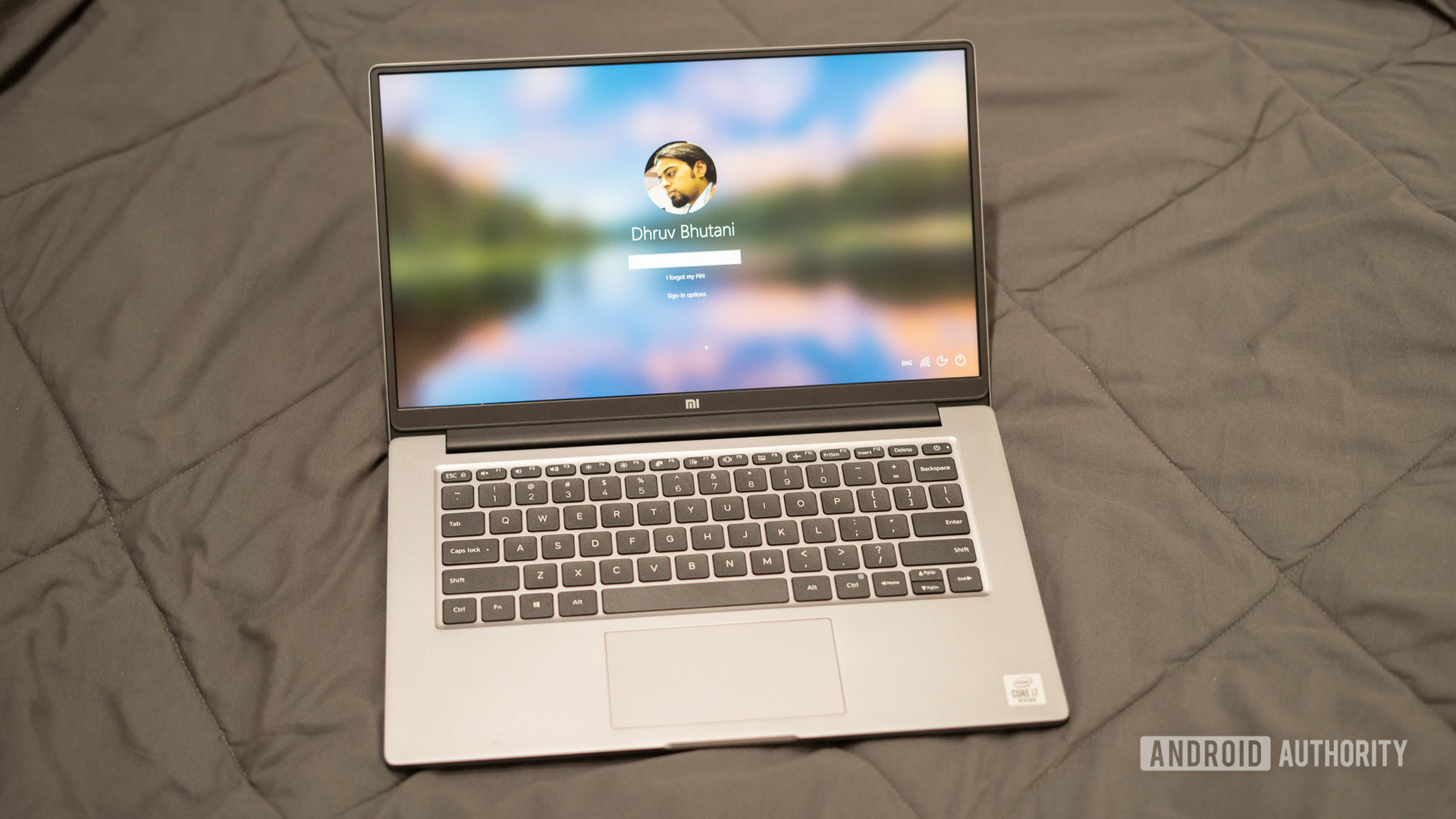
The sleek and light design is a definite highlight. While you can definitely find machines that deliver more power or pack more heat in the graphics department, there are few that can truly hit the right balance between design and portability, and that’s worth more than you’d imagine.
The fast NVMe SSD helps keep things speedy all around.
The performance is good enough for a non-gaming purposes. It’ll handily suffice for regular office work or as a student laptop, but I wouldn’t push my luck if gaming or intense computing is a requirement.
Finally, it has to be said that, despite some misses, Xiaomi made the right call in equipping the machine with a fast SSD that makes a massive difference to the experience over a standard spinning hard drive. Everything loads quickly and the NVMe drive as configured ensures that you are never left sitting around waiting for your files to load up.
What do I dislike about the Mi Notebook 14 Horizon edition?
The quality of the keys could be better and, more importantly, the lack of backlighting is a serious omission. The soldered RAM is a bummer. It is a decidedly anti-consumer move to have non-upgradable RAM.
The lack of a backlit keyboard and below-average speaker quality are just some of the ways Xiaomi cut corners.
Then there are smaller issues, such as the lack of a card reader or the odd presence of a USB 2.0 port on the side. Xiaomi should have done better by tossing in a faster port here.
I also didn’t care much for the speakers on the machine. The speakers sound particularly tinny with no bass or depth to speak off. Peak volume levels are also well short of what you might want.
Should you buy the Mi Notebook 14 Horizon edition?
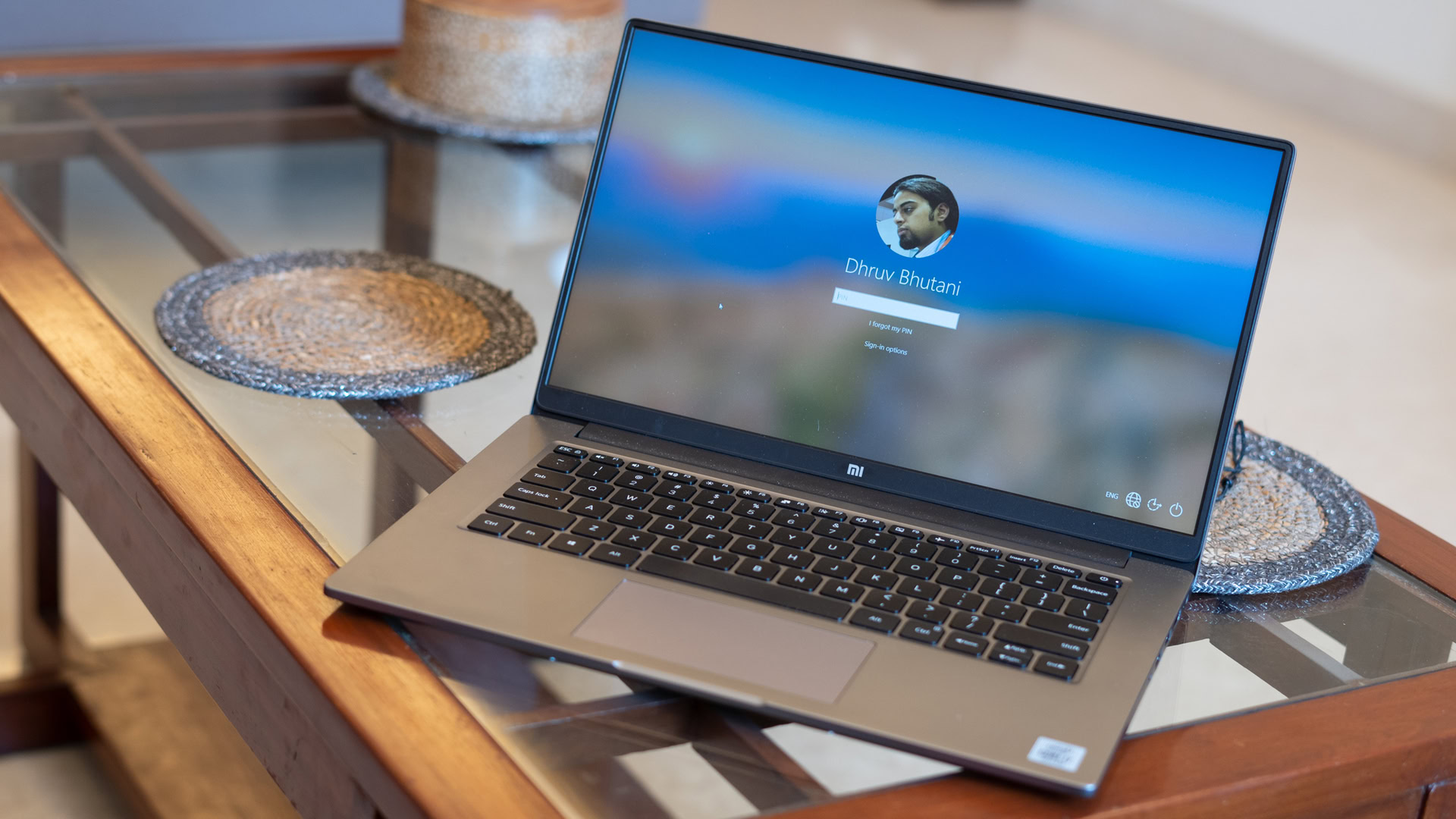
Despite its shortcomings, there is a fair amount to like about the Mi Notebook 14. Props to Xiaomi for taking lead on the edge-to-edge display and a slim chassis that belies its price. There really isn’t much in the segment that can match the relatively premium look and feel offered here.
From a performance perspective, the laptop isn’t anything special. The ASUS vivobook series, in particular, offers similar specifications with the added convenience of swappable RAM sticks. In fact, Ryzen 5 systems with better specs are available at significantly lower price points. However, the Mi Notebook 14 series is trying to upsell the merits of a design-first approach.
Priced between Rs. 41,999 (~$554) and going all the way up to Rs. 59,999 (~$792) for the top-end variant, there is a significant delta between the variants. With all its limitations, I can’t really recommend the top-end variant of the Mi Notebook 14.
That said, if a design-first approach and good-enough performance for day-to-day use are what you are looking for, the base model of the Horizon edition, priced at Rs. 54,999 (~$726) or even the standard Mi Notebook 14 should be a safe bet.
Thank you for being part of our community. Read our Comment Policy before posting.